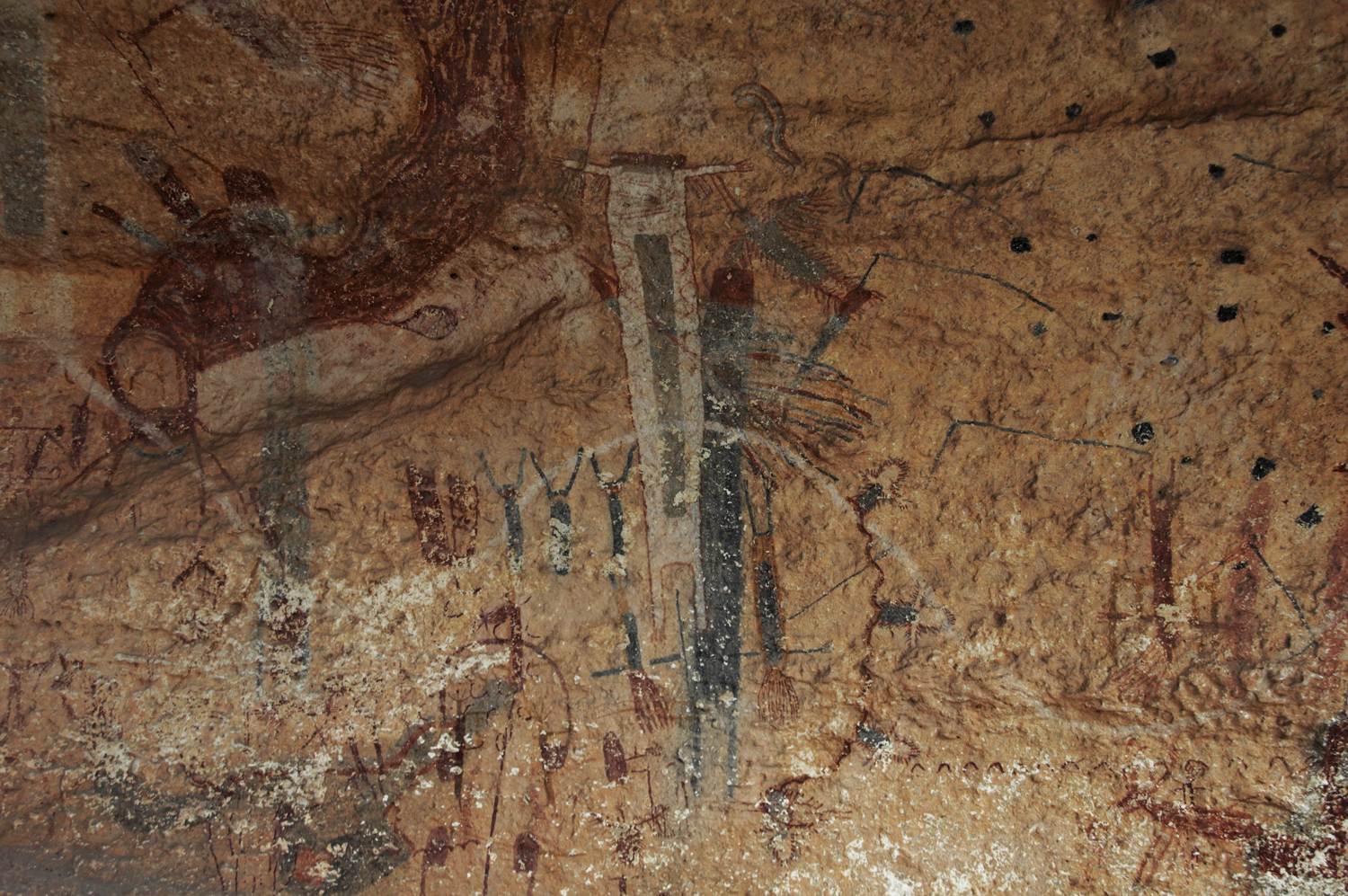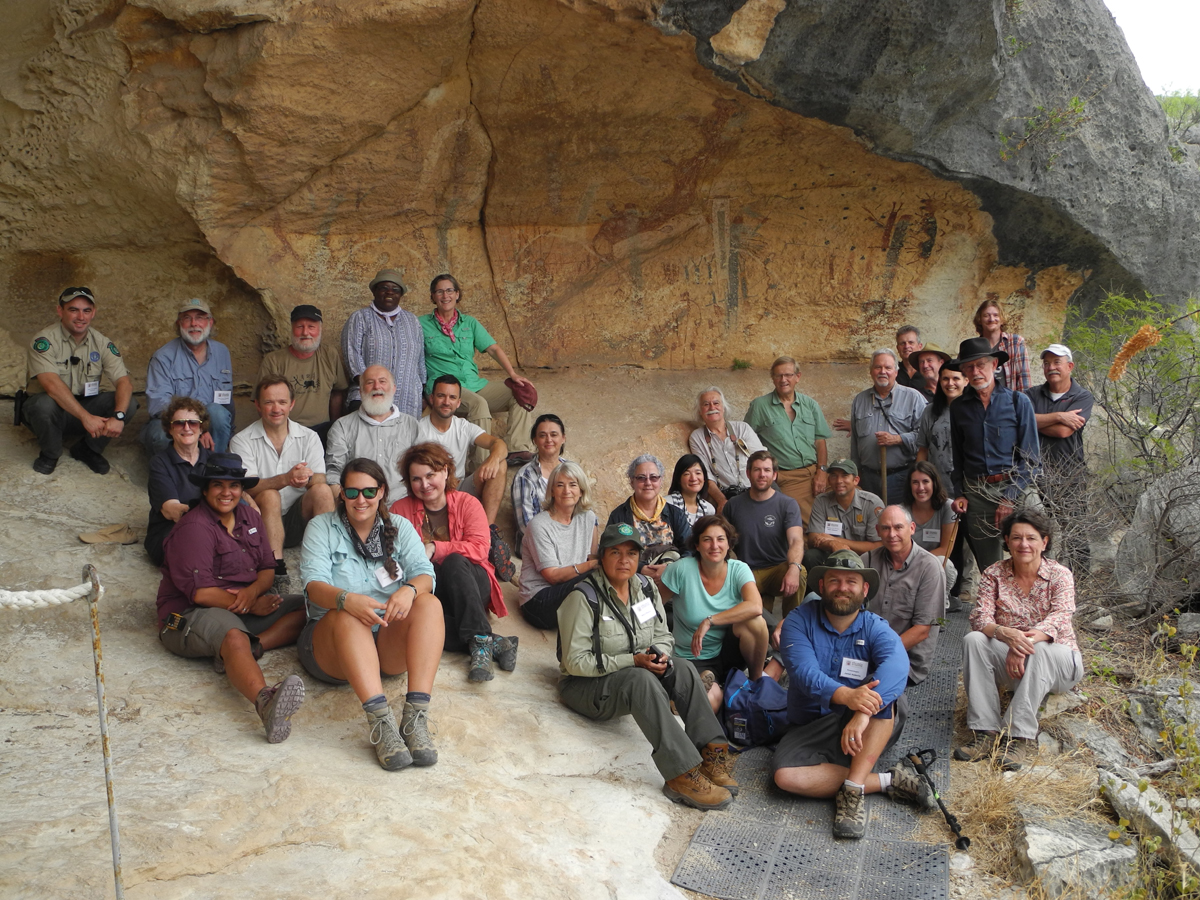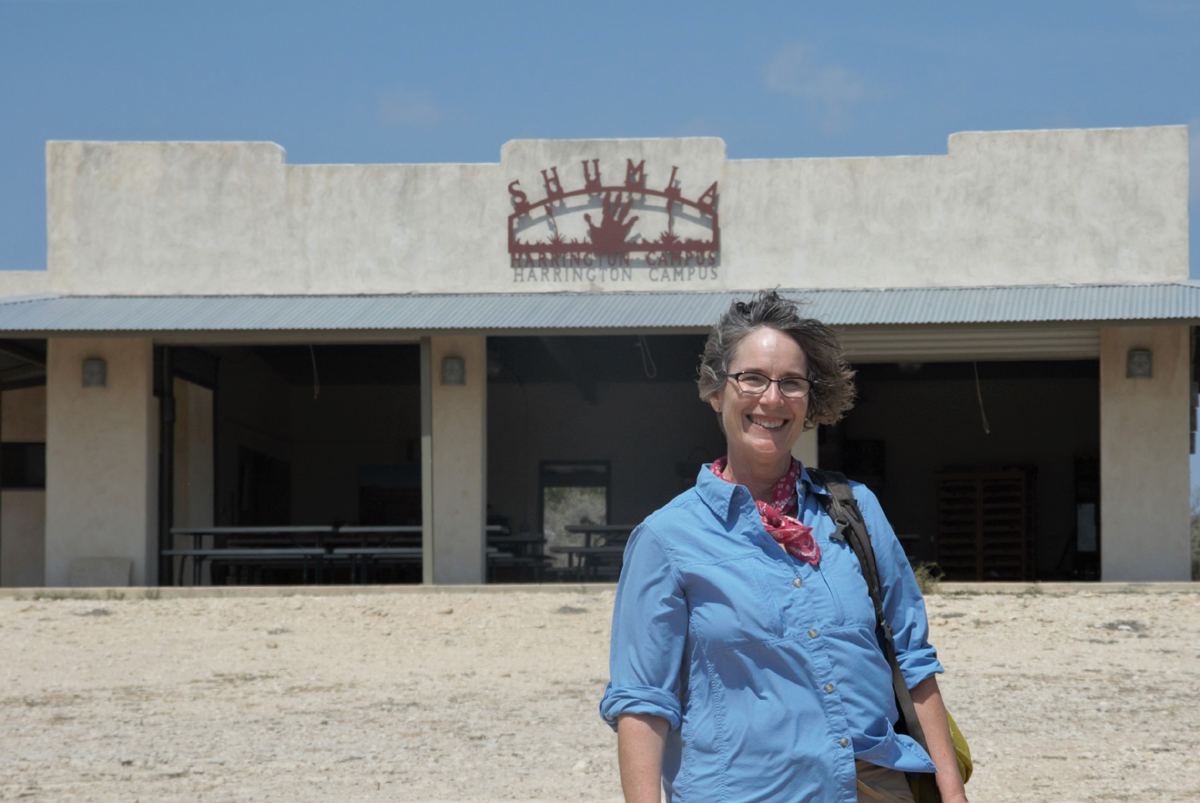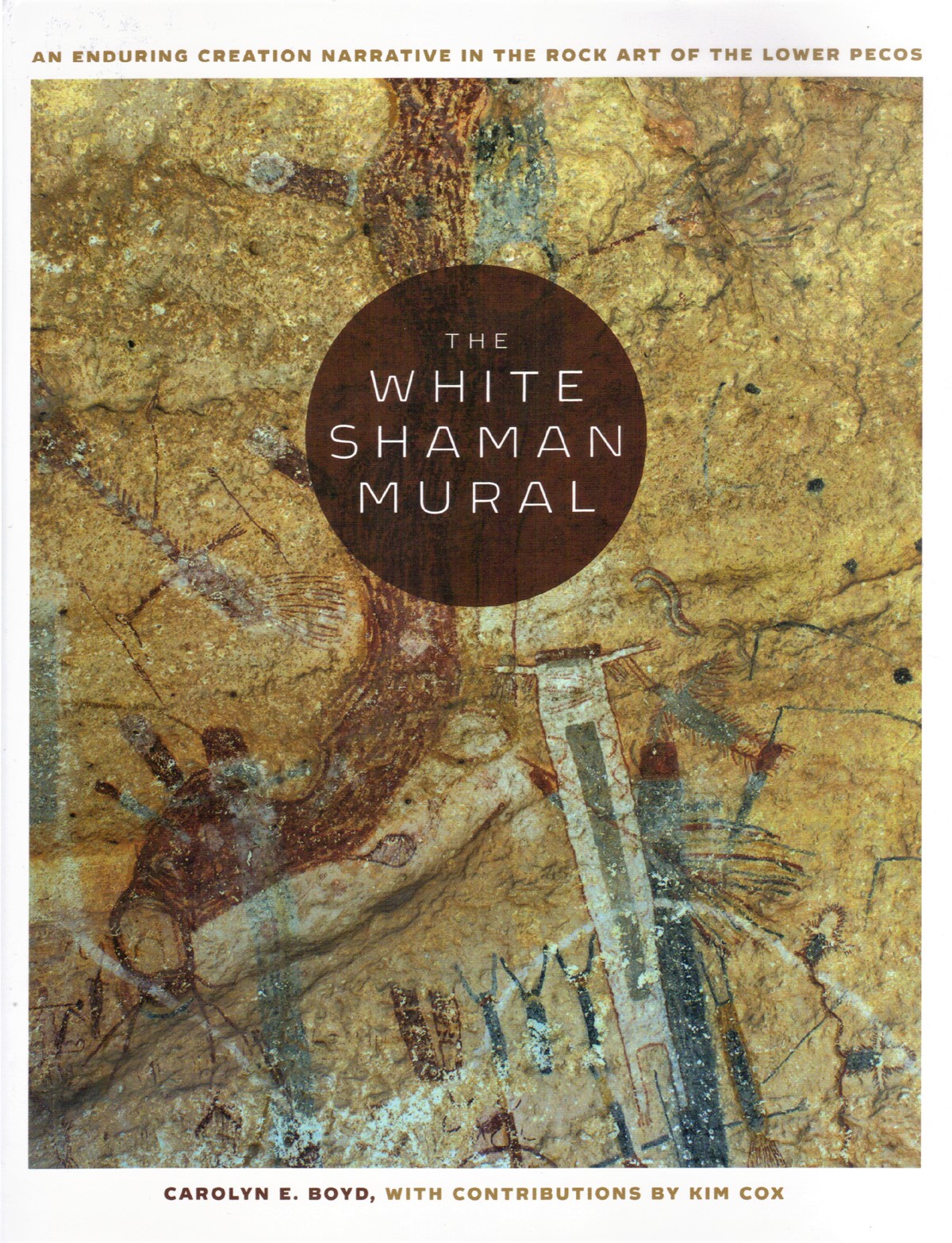


An article from the Del Rio News Herald reports on the group of rock art scholars and conservators visiting the White Shaman Panel (below) and several other major rock art sites in central Val Verde County, Texas, recently.

The experts were part of the third Art on the Rocks colloquium organized by Neville Agnew, senior principal project specialist of the Getty Conservation Institute of Los Angeles, and were guests of Dr. Carolyn Boyd and the Shumla Archeological Research and Education Center.

Twenty five rock art experts toured the White Shaman Panel above the Pecos River and the Fate Bell Shelter in the Seminole Canyon State Park and Historic Site. At the White Shaman, the group listened to a lecture by Shumla founder Dr. Carolyn Boyd (below), detailing her extensive research into the panel's symbolism and story.

"I didn't expect so many paintings, the quantity and the quality," said Pilar Fatás Monforte, Director of the National Museum and Research Center of Altamira in Spain, the site of some of Europe's oldest and best-known cave paintings.
White Shaman Panel. Rock art of the Lower Pecos in Texas @ShumlaArch https://t.co/fCqyJJDS47 pic.twitter.com/AvFMadE5wg
— Bradshaw Foundation (@BradshawFND) July 11, 2018
Thomas McClintock, of the Getty Conservation Institute, stated that the Getty has about 30 years of experience in promoting rock art preservation, noting the institute has published a paper titled, 'Rock Art: A Cultural Treasure at Risk'. He went on to explain that this was the foundational document for what we are doing now. The document sets out four pillars for effective preservation, incorporating all of the values of rock art. What we're doing here is discussing among a group of experts how best to promote the values of rock art to the public.
Carolyn Boyd said "I was really, really honored to have the opportunity to share with them, these incredible scholars from all over the world, the precious rock art that we have here. It's been really spectacular to introduce them, because for most of them, it's their first time to see the rock art here. They were just like, 'Wow, just wow, this is simply amazing!'"
Carolyn Boyd has recently published her research at the White Shaman Panel:
The White Shaman Mural: An Enduring Creation Narrative in the Rock Art of the Lower Pecos
By Carolyn E. Boyd

The prehistoric hunter-gatherers of the Lower Pecos Canyonlands of Texas and Coahuila, Mexico, created some of the most spectacularly complex, colorful, extensive, and enduring rock art of the ancient world. Perhaps the greatest of these masterpieces is the White Shaman mural, an intricate painting that spans some twenty-six feet in length and thirteen feet in height on the wall of a shallow cave overlooking the Pecos River. In The White Shaman Mural, Carolyn E. Boyd takes us on a journey of discovery as she builds a convincing case that the mural tells a story of the birth of the sun and the beginning of time, making it possibly the oldest pictorial creation narrative in North America.
Unlike previous scholars who have viewed Pecos rock art as random and indecipherable, Boyd demonstrates that the White Shaman mural was intentionally composed as a visual narrative, using a graphic vocabulary of images to communicate multiple levels of meaning and function. Drawing on twenty five years of archaeological research and analysis, as well as insights from ethnohistory and art history, Boyd identifies patterns in the imagery that equate, in stunning detail, to the mythologies of Uto-Aztecan-speaking peoples, including the ancient Aztec and the present-day Huichol. This paradigm-shifting identification of core Mesoamerican beliefs in the Pecos rock art reveals that a shared ideological universe was already firmly established among foragers living in the Lower Pecos region as long as four thousand years ago.
by Bradshaw Foundation
Monday 30 May 2022
by Bradshaw Foundation
Wednesday 19 January 2022
by Bradshaw Foundation
Thursday 06 January 2022
by Bradshaw Foundation
Monday 06 December 2021
by Bradshaw Foundation
Monday 29 November 2021
by Bradshaw Foundation
Monday 25 October 2021
by Bradshaw Foundation
Monday 12 July 2021
by Bradshaw Foundation
Monday 24 May 2021
by Bradshaw Foundation
Tuesday 20 April 2021
by Bradshaw Foundation
Thursday 01 April 2021
by Bradshaw Foundation
Tuesday 23 February 2021
by Bradshaw Foundation
Thursday 14 January 2021
by Bradshaw Foundation
Friday 18 December 2020
by Bradshaw Foundation
Sunday 06 December 2020
by Bradshaw Foundation
Thursday 26 November 2020
by Bradshaw Foundation
Wednesday 07 October 2020
by Bradshaw Foundation
Monday 30 May 2022
by Bradshaw Foundation
Wednesday 19 January 2022
by Bradshaw Foundation
Thursday 06 January 2022
by Bradshaw Foundation
Monday 06 December 2021
by Bradshaw Foundation
Monday 29 November 2021
by Bradshaw Foundation
Monday 25 October 2021
by Bradshaw Foundation
Monday 12 July 2021
by Bradshaw Foundation
Monday 24 May 2021
by Bradshaw Foundation
Tuesday 20 April 2021
by Bradshaw Foundation
Thursday 01 April 2021
by Bradshaw Foundation
Tuesday 23 February 2021
by Bradshaw Foundation
Thursday 14 January 2021
by Bradshaw Foundation
Friday 18 December 2020
by Bradshaw Foundation
Sunday 06 December 2020
by Bradshaw Foundation
Thursday 26 November 2020
by Bradshaw Foundation
Wednesday 07 October 2020
Friend of the Foundation











